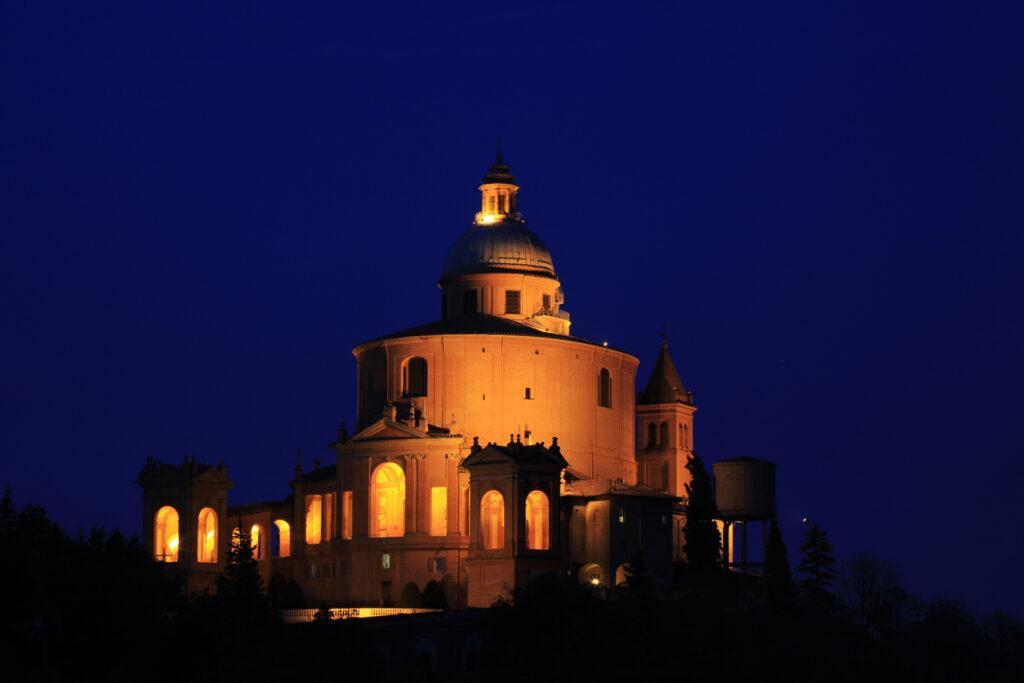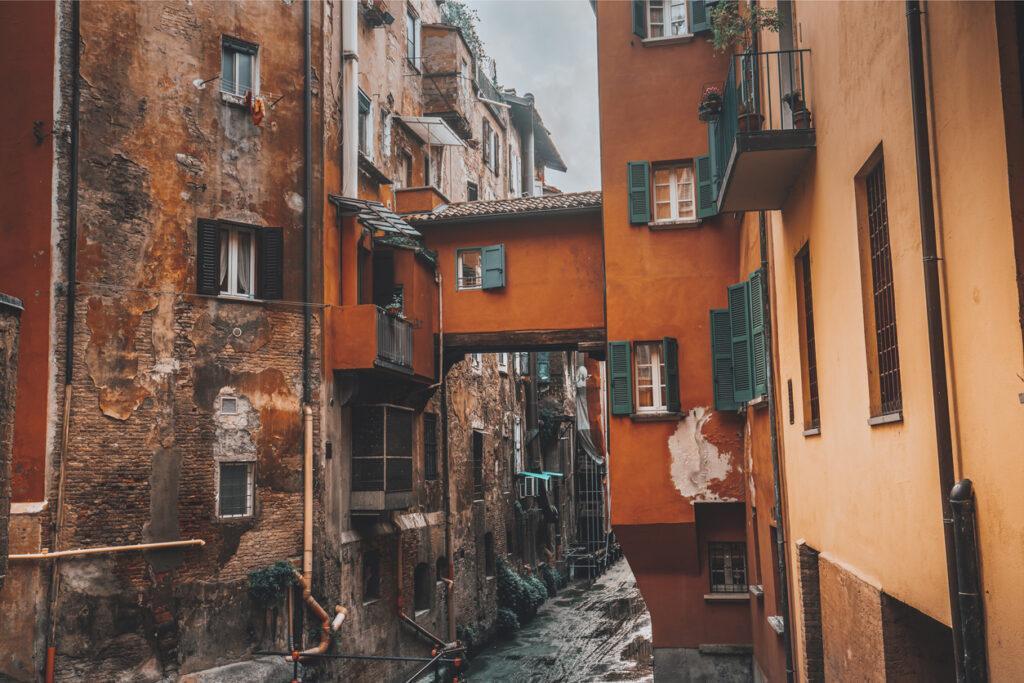Easter Monday in Bologna can be marvellous: there is so much to see, savour, admire, and do that you might consider extending your stay. If I can advise you, try to open it in a few days!
History
The Foundation
And here we are in Bologna, with its history and swarming, its many parks, museums and famous hills. The first settlements date back to 534 BC: the Etruscans founded Velzna (or Felzna), using the same name given to other cities – e.g. Orvieto, which meant ‘fertile land’.
Dominations
The Romans conquered it in 159 BC, naming it Bononia, probably derived from the Celtic bona, ‘fortified place’. Bologna is located on the Via Emilia, traversed (and partly destroyed) by the barbarians. In 727, it was conquered by the Lombards; liberated by Charlemagne, it passed to the Papal State, under whose influence it remained – except for a brief 30-year interlude under the Bentivoglio family – until 1700. In 1796 Napoleon freed it from ecclesiastical rule. Still, after the Congress of Vienna (1815), it returned under the Papacy and remained there until 1860, when it was annexed to the Kingdom of Italy.
Freedom and wealth
Bologna was the first European city to abolish serfdom in 1256. At this time, the city walls were extended, and the town became one of Europe’s ten most populous centres, with an urban development equal to that of Paris. Its economic wealth was mainly linked to the textile industry (the art of wool).
The Portico of San Luca and the Towers

I start by recommending the route under the porticoes from Porta Saragozza to the beautiful sanctuary of the Madonna di San Luca, located at the end of the longest portico in the world (four kilometres and 489 steps!). Bologna is known for the Torre degli Asinelli and the Garisenda Tower (mentioned, the latter, by Dante) – but twenty others had both an aristocratic and military function.
Read also:
The Alma Mater
Bologna is famous for its nearby university, the Alma Mater, in Via Zamboni, referred to by several sources as the oldest in the Western world – its origin dates back to 1088. Bologna had its third city wall, embellished with twelve gates, enclosing its beautiful historical centre, for seven centuries, from 1200 to the early 1900s. The Portico of San Luca and the Towers
The doors
Ten of the twelve doors remain standing: each has its history and mystery. At Porta Saragozza in 1982 there was an occupation by the gay movement, so the first lgbtqi+ centre in Italy, the Cassero, was born. For the past twenty years, the Cassero (from the Arabic al Qasr, fortress) has changed location: it is still on the perimeter of the city walls, immediately after Porta Lame, another famous gate, because it was the scene – on 7 November 1944 – of a battle between partisans and Nazis, with the victory of the partisans. There are two statues depicting partisans who, despite being outnumbered, managed to put the enemy to flight. The Battle of Porta Lame was one of the critical episodes in the Italian Liberation from Nazi-Fascist forces.
The Aposa Torrent
The city of Bologna is only crossed by a torrent called Aposa, a name of Etruscan origin. The Cassero mentioned above was the old saltworks, where, in addition to salt, goods were stored, waiting to leave eastwards, towards the sea.
The canals

But Bologna is also called the little Venice because of that canal in the centre, in Via Piella. Until the Second World War, a large part of the historical centre was crisscrossed by canals: there is still a district called ‘Porto’. The canals were used to transport goods to Romagna, along the Po delta and towards the sea, through the canals of the Reno River.
The Reno River
The Reno did not pass through the city but was diverted from its original route (from Casalecchio di Reno, a few kilometres away) to Bologna for trade purposes.
After the war
After the end of the Second World War, the canals were covered and paved for the renovation and modernisation of the city: you can still find photos in some bookshops and some places from the beginning of the last century showing women going to the canals and washing clothes!
The historic centre
You can continue by visiting the Duomo in Via Indipendenza and then arriving at the Fontana del Nettuno in Piazza Maggiore, where the famous Basilica of San Petronio is often confused with the Duomo – stands. Adjacent is the sumptuous Sala Borsa: a vast library equipped with multimedia content, where events for adults and children occur. The Sala was a sports hall from the 1960s to its renovation in the 1990s: basketball – the city sport par excellence – and boxing were played here.
The Partisan Shrine
On the façade of the Sala Borsa there are hundreds of unknown faces, mostly young, who seem to be looking at you: these are the partisans who fell during the liberation struggle against the Nazi-Fascist occupation in 1943-1944. Many were shot right there; after the Liberation of the city – on 21 April 1945 – the women built this shrine in a spontaneous movement that led them to post photos of their deceased loved ones on the wall.
The Town Hall
Next to the Sala Borsa is Palazzo D’Accursio, built between the 12th and 14th centuries, the historic seat of the Bologna City Council, whose offices were moved a few years ago to new premises in Bolognina.
The Bolognina
The Bolognina is a historical, working-class district located behind the Central Station, where Achille Occhetto, then secretary of the Italian Communist Party, announced the ‘Bolognina turning point’: on 12 November 1989, three days after the fall of the Berlin Wall, during the celebrations for the 45th anniversary of the Battle of Porta Lame, he proposed a path for the transformation of the party, with a change of name and symbol, to create a new identity that would mark the distance with the sad end of the ‘communist’ dream. The Bolognina turning point was the first step in the process that would lead to the birth of the Democratic Party of the Left.
The secret of the Neptune Fountain
Returning to the centre and some typical features of the prosperous city of Bologna, between Piazza Maggiore and the Sala Borsa stands the well-known Neptune fountain by Giambologna, which gives its name to the square. I invite you to discover the amusing optical effect it produces. If you put yourself at a particular angle, you will see its pointing finger that looks like an erection.
There is even a dark stone at the entrance of the Stock Exchange Hall that marks the spot!
An original wireless telephone
Opposite the Sala Borsa, in Piazza del Nettuno, stands the beautiful Palazzo del Podestà. Under its arches, you will probably see several people standing, from behind, at the corners of the Arengo Tower, intent on talking. You will discover an interesting acoustic phenomenon of sound transmission in a diagonal direction: from opposite corners, you can communicate. In medieval times, you can read that somebody invented this ‘channel’ of communication at a distance to make lepers confess.
Read also:
Lucio Dalla
A few steps from Piazza Maggiore is Via d’Azeglio, one of Bologna’s most elegant streets with splendid shops. Here is the sumptuous palace where Lucio Dalla lived, so large that it continues for a few metres on Via D’Azeglio and then turns onto Piazza dei Celestini. On the façade is an installation of Dalla playing the saxophone. In Piazza Cavour – what he called ‘Piazza Grande’ – a bench was installed in 2022 with a statue of Dalla looking, absorbed, into infinity.
Piazza Santo Stefano
Also lovely is Piazza Santo Stefano – a few hundred metres away and immediately after Piazza della Mercanzia – with its basilica of seven churches, built in different periods, mainly by the city’s patron saint, San Petronio. The former Prime Minister and influential political figure, Romano Prodi, lives a few steps away.
The three arrows
Then, you can cross the beautiful Corte degli Isolani and find yourself on Strada Maggiore, where you can have fun looking for the three arrows in the tall wooden portico of Palazzo Isolani. There are a couple of legends about this, different in cause and similar in the ending. One says that a nobleman commissioned three assassins to kill his unfaithful wife. The woman appeared at the window without veils, thus distracting the archers, who took aim wrongly and shot their arrows upwards. The other claims instead that three brigands were there to kill a nobleman from Bologna. A young girl, appearing naked at a window, distracted them.
Museums
Bologna is teeming with museums, art, social and film initiatives.
Among the museums, you will be spoilt for choice: you can visit the Museo Civico Archeologico – to explore the city’s past -, the Pinacoteca Nazionale – with the great Emilian artists -, the Ducati Museum – for motorcycle lovers -, the MAMBO Museum (Museo Arte Moderna Bologna) – with the Morandi collection, the Museo Civico Medievale, the Museo per la memoria di Ustica, a suggestive and moving place, where the DC-9 plane is reconstructed with all the pieces found over the years.
Santa Maria della Vita
Not to be missed, in Via delle Clavature, the Complesso Monumentale Santa Maria della Vita is the most important example of the Bolognese Baroque. It includes the Museo della Sanità e dell’Assistenza, located in the old hospital, the Oratorio dei Battuti and the Santuario, which houses an essential terracotta sculpture group of the Italian Renaissance: the Lamentation over the Dead Christ by Niccolò dell’Arca, dating back to the second half of the 15th century and described as a ‘stone scream’ by Gabriele D’Annunzio.
Exhibitions
There are currently Banksy, Jago and TV Boy exhibitions – until seven May – and the Warhol, Haring and Basquiat exhibition – until 18 June.
Cinema
The love affair between Bologna and the cinema is long and intense. The first film in Bologna was shown in 1896 in the present-day Teatro Duse – then called Teatro Binetti. Several renowned international film festivals take place in Bologna from May onwards.
The Cineteca
I recommend, for now, a visit to the Lumière cinema, the Cineteca di Bologna, with its beautiful little square in front dedicated to the great Bolognese Pier Paolo Pasolini, and the Renzo Renzi Library. The Cienteca is an actual citadel of audiovisuals: the Fondazione Cineteca di Bologna has, in fact, long been considered a point of reference in Europe and the world for its important work in the preservation, restoration, valorisation and promotion of the cinema of the present and the past. Among other things, it holds the personal archive of Charlie Chaplin!
DAMS and Umberto Eco
In Piazzetta Pasolini – the Cineteca’s square – are the university premises of DAMS and, not far away, of Scienze della Comunicazione, the faculty where the semiologist (philosopher, writer, translator…) Umberto Eco taught.
The hills
Natural sites
Made famous by Lùnapop, the Bolognese hills have been inhabited for centuries: there are splendid villas, some of which can be visited today. Among the natural attractions, I recommend the Parco della Chiusa – in Casalecchio di Reno -, also known as ‘Talon’, from the name of the marquises who founded it in the 1600s; the Parco dell’Abbazia di Monteveglio, an extensive park where you can walk to the remains of an ancient medieval castle; the ‘calanchi’, towards San Lazzaro di Savena: rock formations with an undulating appearance alternating with caves and hollows. The landscape here seems lunar and is perhaps unique in Italy.
The routes
If you love trekking, cycling or motorcycling, you can choose from numerous routes in the hills of Bologna.
There are also some museums: I recommend the Museum of Rural Civilisation and the Hill and Wine Eco-museum.
The food
Bolognese cuisine
Lastly, inevitable in the ‘fat’ Bulagna, the food! The famous tortellini, lasagne, tagliatelle, the famous boiled meats, IGP mortadella, tigelle and crescentine – the equivalent of gnocco modenese! Moving on to desserts, in addition to the rice cake, you can enjoy the famous mostarda, a jam made from pears and quinces used to prepare pinza, St Joseph’s raviole, Christmas cake and Certosino or Pan Speziale. You will find many restaurants and bars in the centre: there is something for everyone!
Cuisines from around the world
You can also eat Indian, Chinese, Japanese, Palestinian, Iranian, Korean, Afghan, Greek, Ethiopian-Eritrean… The quality is high, and you can indulge in culinary experiments!
Getting lost in the wonders of Bologna is one of the best ideas for spending an exciting and surprising Easter Monday!


